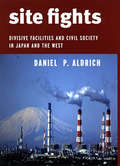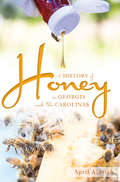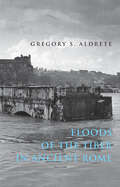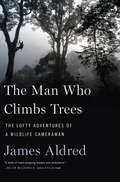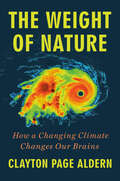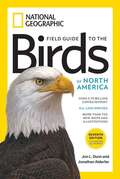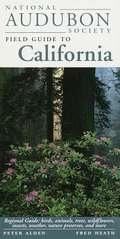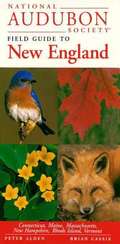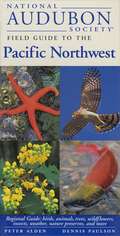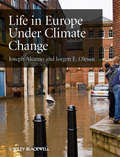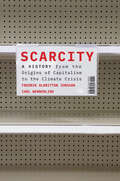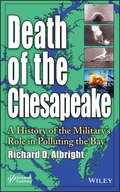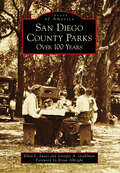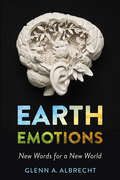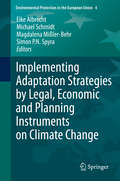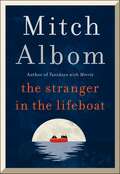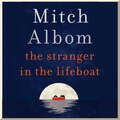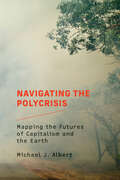- Table View
- List View
150 Best Terrace and Balcony Ideas
by Irene Alegre150 Best Terrace and Balcony Ideas is the ultimate resource for innovative terrace, roof garden, patio, and balcony design ideas for outdoor spaces of all shapes and sizes. Featured inside this lavish guidebook are 150 never-before-shared tips and techniques provided by internationally renowned architects and designers, along with full-color photographs and diagrams of sixty-five uniquely beautiful projects from around the world. The design ideas reveal how to create exterior spaces that are clean, modern, and comfortable, as well as how to use cutting-edge materials that are practical, cost-effective, and environmentally friendly. Best of all, the design ideas featured inside are easy to follow and can be tailored to the unique tastes and needs of individual homeowners.
Post-Kyoto International Climate Policy: Implementing Architectures for Agreement
by Joseph E. Aldy Robert N. StavinsThe Harvard Project on International Climate Agreements is a global, multi-disciplinary effort intended to help identify the key design elements of a scientifically sound, economically rational, and politically pragmatic post-2012 international policy architecture for addressing the threat of climate change. It has commissioned leading scholars to examine a uniquely wide range of core issues that must be addressed if the world is to reach an effective agreement on a successor regime to the Kyoto Protocol. The purpose of the project is not to become an advocate for any single policy but to present the best possible information and analysis on the full range of options concerning mitigation, adaptation, technology, and finance. The detailed findings of the Harvard Project are reported in this volume, which contains twenty-seven specially commissioned chapters. A companion volume summarizing the main findings of this research is published separately as Post-Kyoto International Climate Policy: Summary for Policymakers.
Site Fights: Divisive Facilities and Civil Society in Japan and the West
by Daniel P. AldrichOne of the most vexing problems for governments is building controversial facilities that serve the needs of all citizens but have adverse consequences for host communities. Policymakers must decide not only where to locate often unwanted projects but also what methods to use when interacting with opposition groups. In Site Fights, Daniel P. Aldrich gathers quantitative evidence from close to five hundred municipalities across Japan to show that planners deliberately seek out acquiescent and unorganized communities for such facilities in order to minimize conflict. When protests arise over nuclear power plants, dams, and airports, agencies regularly rely on the coercive powers of the modern state, such as land expropriation and police repression. Only under pressure from civil society do policymakers move toward financial incentives and public relations campaigns. Through fieldwork and interviews with bureaucrats and activists, Aldrich illustrates these dynamics with case studies from Japan, France, and the United States. The incidents highlighted in Site Fights stress the importance of developing engaged civil society even in the absence of crisis, thereby making communities both less attractive to planners of controversial projects and more effective at resisting future threats.
A History of Honey in Georgia and the Carolinas (American Palate)
by April AldrichIn the late 1800s, Georgia and the Carolinas produced millions of pounds of honey and created a lasting legacy within the industry. The uses for the sweet nectar go well beyond flavor. Bee pollination extensively benefits agricultural crops in the area. Elements from the beehive are commonly used in popular cosmetics, medicines and mead. Beekeepers also face serious challenges like Colony Collapse Disorder. Join author and beekeeper April Aldrich as she traces the delectable history of honey and beekeeping throughout the region, from ancient apiaries to modern meaderies and beyond.
Floods of the Tiber in Ancient Rome (Ancient Society and History)
by Gregory S. AldreteA study of the impact of flooding on the ancient city during the classical period.While the remains of its massive aqueducts serve as tangible reminders of Rome’s efforts to control its supply of drinking water, there are scant physical reminders that other waters sometimes raged out of control. In fact, floods were simply a part of life in ancient Rome, where proximity to the Tiber left a substantial part of the city vulnerable to the river’s occasional transgressions.Here, in the first book-length treatment of the impact of floods on an ancient city, Gregory S. Aldrete draws upon a diverse range of scientific and cultural data to develop a rich and detailed account of flooding in Rome throughout the classical period.Aldrete explores in detail the overflowing river’s destructive effects, drawing from ancient and modern written records and literary accounts, analyses of the topography and hydrology of the Tiber drainage basin, visible evidence on surviving structures, and the known engineering methods devised to limit the reach of rising water. He discusses the strategies the Romans employed to alleviate or prevent flooding, their social and religious attitudes toward floods, and how the threat of inundation influenced the development of the city’s physical and economic landscapes.“Floods of the Tiber in Ancient Rome is that rare thing in scholarship, a work that genuinely fills a gap in the scholarly literature. Professor Aldrete has brilliantly illuminated an aspect of ancient Rome that was ever present to the city’s inhabitants but almost invisible to modern historians.” —Stanley Burstein, history teacher“Raises important questions about the effects of flooding of the Tiber on the city of ancient Rome and its inhabitants and explores why Romans did not take more sweeping steps to reduce, if not eliminate, the dangers of urban flooding. There is no comparable book-length study of this topic, so this work fills a real need. It will be of interest not only to students of ancient history, but to hydrologists and students of urban studies as well. Certainly it will give us classicists much to think about in our assessment of urban life in ancient Rome.” —Harry B. Evans, Fordham University, author of Aqueduct Hunting in the Seventeenth Century
The Man Who Climbs Trees: The Lofty Adventures of a Wildlife Cameraman
by James Aldred“A vertiginous, white-knuckled adventure through some of the most spectacular forests in the world.” —Washington Post Meet the man who climbs trees for a living. In this adventure memoir, Aldred carries us with him across the globe and up to the top of these towering forest titans as he recalls his most memorable encounters with trees and their inhabitants. Every child knows the allure of climbing trees. But how many of us get to make a living at it, spending days observing nature from the canopies of stunning forests all around the world? As a wildlife cameraman for the BBC and National Geographic, James Aldred spends his working life high up in trees, poised to capture key moments in the lives of wild animals and birds. Aldred’s climbs take him to the most incredible and majestic trees in existence. In Borneo, home to the tallest tropical rain forest on the planet, just getting a rope up into the 250-foot-tall trees is a challenge. In Venezuela, even body armor isn’t guaranteed protection against the razor-sharp talons of a nesting Harpy Eagle. In Australia, the peace of being lulled to sleep in a hammock twenty-five stories above the ground— after a grueling day of climbing and filming—is broken by a midnight storm that threatens to topple the tree. In this vivid account of memorable trees he has climbed (“Goliath,” “Apollo,” “Roaring Meg”), Aldred blends incredible stories of his adventures in the branches with a fascination for the majesty of trees to show us the joy of rising—literally—above the daily grind, up into the canopy of the forest.
Famous Felines: Cats' Lives in Fact and Fiction
by David AldertonA delightful hiss-torical survey of cats in popular culture. Louis Wain and Beatrix Potter adored them, but Walt Disney preferred dogs; cats have been depicted in art, books and, more recently, film and TV as lovable but determined creatures. Where the dog is loving but stupid, the cat is clever but sly. Bestselling author David Alderton explores this myth and reveals just who the most famous cats are, including cartoon classics such as Top Cat, Felix, and the dastardly Si and Am from 101 Dalmatians. Using collectible memorabilia and original book covers, this charming book is a purr-fect stocking filler, along with its doggish counterpart, Famous Dogs by Fiona Shoop—ideal packaged together.
Encounters with Florida's Endangered Wildlife
by Doug AldersonEastern bison roamed Florida into the 1800s. Red wolves disappeared in the 1920s. The dusky seaside sparrow was declared extinct in 1990.It's too soon to say whether the 116 threatened, endangered, or imperiled animal species currently found in the state will also fall victim to climate change, extermination, overdevelopment, or poisons. But as long as they remain, there will be men and women who work tirelessly on their behalf.Combining adventure, natural history, and cultural history, Encounters with Florida’s Endangered Wildlife features chapters tracking panthers, black bears, whooping cranes, manatees, sea turtles, even ivory-billed woodpeckers--which may or may not be extinct. Join Doug Alderson as he travels into prairies, woods, springs, and ocean to come face to face with these and other captivating creatures and learns firsthand about their strangled lives and fragile habitats.With a chapter on the impact of non-native populations of Burmese pythons and Rhesus monkeys, as well as a chilling epilogue that imagines the peninsula one hundred years in the future, this book is a must-read for anyone who wants to know more about the current state of wild Florida.
The Weight of Nature: How a Changing Climate Changes Our Brains
by Clayton Page AldernA deeply reported, eye-opening book about climate change, our brains, and the weight of nature on us all. The march of climate change is stunning and vicious, with rising seas, extreme weather, and oppressive heat blanketing the globe. But its effects on our very brains constitute a public-health crisis that has gone largely unreported. Based on seven years of research, this book by the award-winning journalist and trained neuroscientist Clayton Page Aldern, synthesizes the emerging neuroscience, psychology, and behavioral economics of global warming and brain health. A masterpiece of literary journalism, this book shows readers how a changing environment is changing us today, from the inside out. Aldern calls it the weight of nature. Hotter temperatures make it harder to think clearly and problem-solve. They increase the chance of impulsive violence. Immigration judges are more likely to reject asylum applications on hotter days. Umpires, to miss calls. Air pollution, heatwaves, and hurricanes can warp and wear on memory, language, and sensory systems; wildfires seed PTSD. And climate-fueled ecosystem changes extend the reach of brain-disease carriers like mosquitos, brain-eating amoebas, and the bats that brought us the mental fog of long COVID. How we feel about climate change matters deeply; but this is a book about much more than climate anxiety. As Aldern richly details, it is about the profound, direct action of global warming on our brains and behavior—and the most startling portrait yet of unforeseen environmental influences on our minds. From farms in the San Joaquin Valley and public schools across the United States to communities in Norway&’s Arctic, the Micronesian islands, and the French Alps, this book is an unprecedented portrait of a global crisis we thought we understood.
National Geographic Field Guide To The Birds Of North America, 7th Edition
by Jonathan AlderferThis fully revised edition of the best-selling North American bird field guide is the most up-to-date guide on the market. Perfect for beginning to advanced birders, it is the only book organized to match the latest American Ornithological Society taxonomy. With more than 2.75 million copies in print, this perennial bestseller is the most frequently updated of all North American bird field guides. Filled with hand-painted illustrations from top nature artists (including the ever-popular hummingbird), this latest edition is poised to become an instant must-have for every serious birder in the United States and Canada. The 7th edition includes 37 new species for a total of 1,023 species; 16 new pages allow for 250 fresh illustrations; 80 new maps; and 350 map revisions. With taxonomy revised to reflect the radical new American Ornithological Society taxonomy established in 2016, the addition of standardized banding codes, and text completely vetted by birding experts, this new edition will top of the list of birding field guides for years to come.
National Audubon Society Regional Guide To California (Audubon Society Regional Field Guides)
by Peter Alden National Audubon Society StaffFilled with concise descriptions and stunning photographs, the National Audubon Society Field Guide to California belongs in the home of every California resident and in the suitcase or backpack of every visitor. This compact volume contains: An easy-to-use field guide for identifying 1,000 of the state's wildflowers, trees, mushrooms, mosses, fishes, amphibians, reptiles, birds, butterflies, mammals, and much more; A complete overview of California's natural history, covering geology, wildlife habitats, ecology, fossils, rocks and minerals, clouds and weather patterns and night sky; An extensive sampling of the area's best parks, preserves, beaches, forests, islands, and wildlife sanctuaries, with detailed descriptions and visitor information for 50 sites and notes on dozens of others. The guide is packed with visual information -- the 1,500 full-color images include more than 1,300 photographs, 14 maps, and 16 night-sky charts, as well as 150 drawings explaining everything from geological processes to the basic features of different plants and animals. For everyone who lives or spends time in California, there can be no finer guide to the area's natural surroundings than the National Audubon Society Field Guide to California.
National Audubon Society Regional Guide To New England
by Peter Alden National Audubon Society StaffFilled with concise descriptions and stunning photographs, the National Audubon Society Field Guide to New England belongs in the home of every New England resident and in the suitcase or backpack of every visitor. This compact volume contains: An easy-to-use field guide for identifying 1,000 of the region's wildflowers, trees, mushrooms, mosses, fishes, amphibians, reptiles, birds, butterflies, mammals, and much more; A complete overview of New England's natural history, covering geology, wildlife habitats, ecology, fossils, rocks and minerals, clouds and weather patterns and night sky; An extensive sampling of the area's best parks, preserves, beaches, forests, islands, and wildlife sanctuaries, with detailed descriptions and visitor information for 50 sites and notes on dozens of others. The guide is packed with visual information -- the 1,500 full-color images include more than 1,300 photographs, 14 maps, and 16 night-sky charts, as well as 150 drawings explaining everything from geological processes to the basic features of different plants and animals. For everyone who lives or spends time in Connecticut, Maine, Massachusetts, Rhode Island, New Hampshire, or Vermont, there can be no finer guide to the area's natural surroundings than the National Audubon Society Field Guide to New England.
National Audubon Society Field Guide to the Pacific Northwest
by Peter Alden Amy Gregoret Daniel Mathews Dennis Paulson Richard Keen Eric A. Oches Robert Sundstrom Wendy B. ZomleferA complete overview of the Pacific Northwest's natural history, covering geology, wildlife habitats, ecology, fossils, rocks and minerals, clouds and weather patterns and night sky.
Life in Europe Under Climate Change
by Joseph Alcamo Jorgen E. OlesenLife in Europe will indeed go on as the climate changes, but not in the same way as before. The air will be warmer, winds will change, patterns of rainfall and snowfall will alter, and sea level is likely to rise. These phenomena are already being seen. Europe will in the future experience marked changes in vegetation cover, increased floods along rivers and coastlines as well as more frequent droughts and forest fires, often leading to large societal costs. The changes will be minor in some cases, profound in others, but in any case, pervasive. This book uses the most up to date information issued by the IPCC (Intergovernmental Panel on Climate Change), and informs readers about these effects, as well as showing how Europe is contributing to attempts to slow the tempo of global climate change, and how it can adapt to the climate change that seems unavoidable. Life in Europe under Climate Change makes essential information on climate impacts in Europe accessible to a broad audience, including students, politicians, planners and members of non-governmental organizations.
Scarcity: A History from the Origins of Capitalism to the Climate Crisis
by Fredrik Albritton Jonsson Carl WennerlindA sweeping intellectual history of the concept of economic scarcity—its development across five hundred years of European thought and its decisive role in fostering the climate crisis.Modern economics presumes a particular view of scarcity, in which human beings are innately possessed of infinite desires and society must therefore facilitate endless growth and consumption irrespective of nature’s limits. Yet as Fredrik Albritton Jonsson and Carl Wennerlind show, this vision of scarcity is historically novel and was not inevitable even in the age of capitalism. Rather, it reflects the costly triumph of infinite-growth ideologies across centuries of European economic thought—at the expense of traditions that sought to live within nature’s constraints.The dominant conception of scarcity today holds that, rather than master our desires, humans must master nature to meet those desires. Albritton Jonsson and Wennerlind argue that this idea was developed by thinkers such as Francis Bacon, Samuel Hartlib, Alfred Marshall, and Paul Samuelson, who laid the groundwork for today’s hegemonic politics of growth. Yet proponents of infinite growth have long faced resistance from agrarian radicals, romantic poets, revolutionary socialists, ecofeminists, and others. These critics—including the likes of Gerrard Winstanley, Dorothy Wordsworth, Karl Marx, and Hannah Arendt—embraced conceptions of scarcity in which our desires, rather than nature, must be mastered to achieve the social good. In so doing, they dramatically reenvisioned how humans might interact with both nature and the economy.Following these conflicts into the twenty-first century, Albritton Jonsson and Wennerlind insist that we need new, sustainable models of economic thinking to address the climate crisis. Scarcity is not only a critique of infinite growth, but also a timely invitation to imagine alternative ways of flourishing on Earth.
Death of the Chesapeake: A History of the Military's Role in Polluting the Bay
by Richard AlbrightIn essence this book deals with an area that contributes significantly to the pollution and degradation of Chesapeake Bay, but has been completely overlooked in many of the efforts to restore the Bay, specifically, the federal military pollution sources. The book also recognizes for the first time, that efforts to restore the Bay have failed because of violation of a fundamental precept of environmental cleanup; that is, to sample the site and see what is there. The Bay itself has never been sampled. Thus this book presents a view of the environmental condition of Chesapeake Bay that is totally unique. It covers a part of the history of the Bay that is not widely known, including how the Bay was formed. It presents a mixture of science, military history, and novel solutions to the Bay's degradation. In so doing, the author examines the military use of the Bay and reveals the extent of munitions dumpsites containing nitrogen and phosphorus as well as chemical warfare material, and how this is effecting the environment. The book concludes with the author's own clean-up plan that, if implemented, would go a long way to restoring health to Bay. The book is supplemented with many photographs and maps.
San Diego County Parks: Over 100 Years (Images of America)
by Brian Albright Ellen L. Sweet Jennifer A. GrahlmanFrom its earliest park in 1913, the County of San Diego has more than 100 years of serving the public with unique park and recreational experiences while preserving significant natural and cultural resources. Officially, the San Diego County Board of Supervisors established the Department of Recreation in 1946. Today, the department manages over 50,000 acres of parks, campgrounds, trails, recreation centers, sports complexes, and ecological and open-space preserves. The county covers an area that includes coastline, mountains, deserts, lakes, lagoons, and other habitats�it is the nation�s most biologically diverse county�and the department�s properties mirror this biodiversity. They also contain sites that reveal the county�s history: Mexican-era ranchos, an overland stage station, remnants of an early gristmill, Victorian mansions, traces of flume systems, Depression-era construction projects, an 1887 boathouse, and parks that reflect the advent of early automobile tourism.
Earth Emotions: New Words for a New World
by Glenn A. AlbrechtAs climate change and development pressures overwhelm the environment, our emotional relationships with Earth are also in crisis. Pessimism and distress are overwhelming people the world over. In this maelstrom of emotion, solastalgia, the homesickness you have when you are still at home, has become, writes Glenn A. Albrecht, one of the defining emotions of the twenty-first century.Earth Emotions examines our positive and negative Earth emotions. It explains the author's concept of solastalgia and other well-known eco-emotions such as biophilia and topophilia. Albrecht introduces us to the many new words needed to describe the full range of our emotional responses to the emergent state of the world. We need this creation of a hopeful vocabulary of positive emotions, argues Albrecht, so that we can extract ourselves out of environmental desolation and reignite our millennia-old biophilia—love of life—for our home planet. To do so, he proposes a dramatic change from the current human-dominated Anthropocene era to one that will be founded, materially, ethically, politically, and spiritually on the revolution in thinking being delivered by contemporary symbiotic science. Albrecht names this period the Symbiocene.With the current and coming generations, "Generation Symbiocene," Albrecht sees reason for optimism. The battle between the forces of destruction and the forces of creation will be won by Generation Symbiocene, and Earth Emotions presents an ethical and emotional odyssey for that victory.
Implementing Adaptation Strategies by Legal, Economic and Planning Instruments on Climate Change
by Eike Albrecht Michael Schmidt Magdalena Mißler-Behr Simon P. N. SpyraThe causes and effects of climate change are just as varied as the proposed solutions and approaches for dealing with the problem. Given the global character of climate change, comprehensive global cooperation is called for that leads to effective and appropriate international action in accordance with the respective responsibilities. These will inevitably differ depending on the capabilities and the social and economic situations of the respective actors. The contributions in this book present a variety of ideas, approaches and tools regarding the adaptation to climate change in specific countries and regions. In addition to examining (existing) legal instruments, they also focus on the implementation of economic instruments and planning tools, as well as their (further) development. Rather than simply discussing strategies to counteract climate change by reducing emissions, the authors also search for ways of actively adapting to climate change.
The Stranger in the Lifeboat
by Mitch AlbomThe stunning new novel from the bestselling author of global phenomenon Tuesdays with MorrieAdrift in a raft after a terrible shipwreck, ten strangers try to survive while they wait for rescue.After three days, short on water, food and hope, they spot a man floating in the waves.They pull him on board - and the survivor claims he can save them.But should they put their trust in him?Will any of them see home again?And why did the ship really sink?The Stranger in the Lifeboat is not only a deeply moving novel about the power of love and hope in the face of danger, but also a mystery that will keep you guessing to the very end.'Mitch Albom sees the magical in the ordinary' Cecelia Ahern'He has the ability to make you cry in spite of yourself' Boston Globe'Albom has touched the lives of a lot of people he never even knew' Time
The Stranger in the Lifeboat: The uplifting new novel from the bestselling author of Tuesdays with Morrie
by Mitch AlbomTHE INSTANT NO.1 NEW YORK TIMES BESTSELLERThe stunning new novel from the bestselling author of global phenomenon Tuesdays with Morrie'Mitch Albom sees the magical in the ordinary' Cecelia Ahern____________Adrift in a raft after a terrible shipwreck, ten strangers try to survive while they wait for rescue.After three days, short on water, food and hope, they spot a man floating in the waves.They pull him on board - and the survivor claims he can save them.But should they put their trust in him?Will any of them see home again?And why did the ship really sink?The Stranger in the Lifeboat is not only a deeply moving novel about the power of love and hope in the face of danger, but also a mystery that will keep you guessing to the very end.____________What real readers are saying about The Stranger in the Lifeboat: 'Enthralling storytelling as always from this brilliant writer' FIVE STARS 'Just when I thought I had things figured out . . . plot twist. One that was not expected. And another and another and another. Mind. Blown . . . You just just have to read it' FIVE STARS'Albom can always be depended on to not only write a book that is written well and entertaining, but compels the reader to look within themselves and feel something new' FIVE STARS'A very exciting, thrilling and poignant tale of trying to survive against the odds' FIVE STARS
Anxious Politics
by Bethany Albertson Gadarian Shana KushnerEmotions matter in politics - enthusiastic supporters return politicians to office, angry citizens march in the streets, a fearful public demands protection from the government. Anxious Politics explores the emotional life of politics, with particular emphasis on how political anxieties affect public life. When the world is scary, when politics is passionate, when the citizenry is anxious, does this politics resemble politics under more serene conditions? If politicians use threatening appeals to persuade citizens, how does the public respond? Anxious Politics argues that political anxiety triggers engagement in politics in ways that are potentially both promising and damaging for democracy. Using four substantive policy areas (public health, immigration, terrorism, and climate change), the book seeks to demonstrate that anxiety affects how we consume political news, who we trust, and what politics we support. Anxiety about politics triggers coping strategies in the political world, where these strategies are often shaped by partisan agendas.
Cute Kawaii Doodles
by Sarah AlbertoBursting with ideas for illustrators and those who have never sketched before, this inspirational book will teach you how to draw more than 100 adorable doodles and super-cute characters in just a few easy steps. Starting with a simple shape such as a circle or a square, Sarah Alberto - aka Doodles by Sarah - shows you how to transform these into a quirky plant, a cute donut, a characterful face, a dainty cloud, and much, much more.Annotated with quick tips and tricks to explain the process, the visual steps will show you how to create a whole host of charming characters, using the ubiquitous ballpoint pen. Why a ballpoint pen? It's universal, affordable, and versatile, and allows you to create small details and sharp lines. Sarah also demonstrates how you can also use coloured pencils or markers to add extra life to your completed doodles.With the author's engaging, sweet and simple style, you'll be instantly inspired to pick up a pen and some paper and doodle like you've never done before!
Navigating the Polycrisis: Mapping the Futures of Capitalism and the Earth
by Michael J. AlbertAn innovative work of realism and utopianism that analyzes the possible futures of the world-system and helps us imagine how we might transition beyond capitalism.The world-system of which we are all a part faces multiple calamities: climate change and mass extinction, the economic and existential threat of AI, the chilling rise of far-right populism, and the invasion of Ukraine, to name only a few. In Navigating the Polycrisis, Michael Albert seeks to illuminate how the &“planetary polycrisis&” will disrupt the global community in the coming decades and how we can best meet these challenges. Albert argues that we must devote more attention to the study of possible futures and adopt transdisciplinary approaches to do so. To provide a new form of critical futures analysis, he offers a theoretical framework—planetary systems thinking—that is informed by complexity theory, world-systems theory, and ecological Marxism. Navigating the Polycrisis builds on existing work on climate futures and the futures of capitalism and makes three main contributions. First, the book brings together modeling projections with critical social theory in a more systematic way than has been done so far. Second, the book shows that in order to grasp the complexity of the planetary polycrisis, we must analyze the convergence of crises encompassing the climate emergency, the structural crisis of global capitalism, net energy decline, food system disruption, pandemic risk, far-right populism, and emerging technological risks (e.g. in the domains of artificial intelligence, biotechnology, and nuclear weapons). And third, the book contributes to existing work on postcapitalist futures by analyzing the processes and mechanisms through which egalitarian transitions beyond capitalism might occur.A much-needed work of global futures studies, Navigating the Polycrisis brings together the rigor of the natural and social sciences and speculative imagination informed by science fiction to forge pathways to our possible global future.
Svalbard Imaginaries: The Making of an Arctic Archipelago (Arctic Encounters)
by Mathias Albert Dina Brode-Roger Lisbeth IversenBy drawing on a broad range of disciplinary backgrounds, this book illustrates the immense complexities of Svalbard as a place, point of reference, or social concept. It portrays the multiple, situated perspectives that characterize understandings and imaginings of Svalbard, and brings together contributions from academic fields that rarely interact with each other.Svalbard Imaginaries contributes to a number of research contexts, ranging from a broadly conceived, multi-disciplinary field of ‘Arctic Studies’ to more disciplinary specific debates on how places are reworked at the interstices of various global flows and vice versa. It assembles contributions on imaginaries that cover a wide array of issues, including—but not limited to—Svalbard as a geopolitical site, a landscape, an image, a (mining) heritage assemblage, a tourist destination, a wilderness, a built environment, a site of knowledge production, a site of artistic engagement, and projections of the future. It deliberately assembles analyses that refer to a variety of timescales and covers representations of the past, the present, and possible futures of Svalbard.


